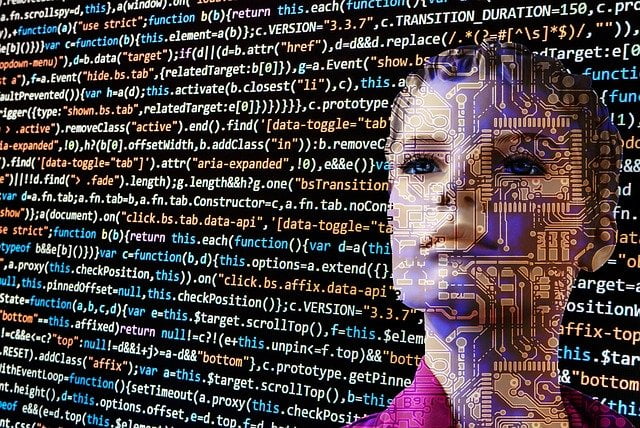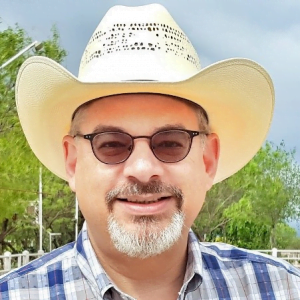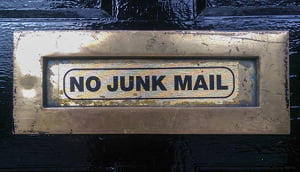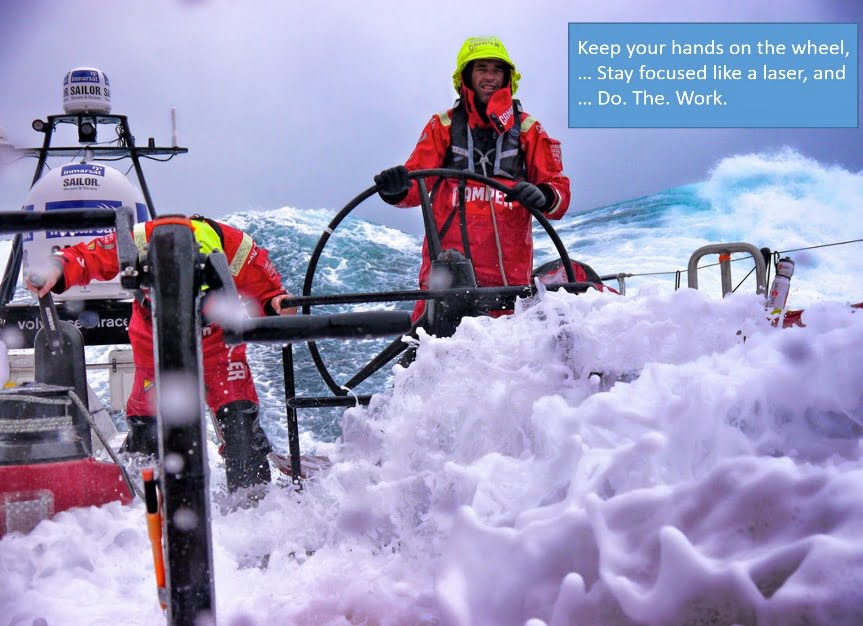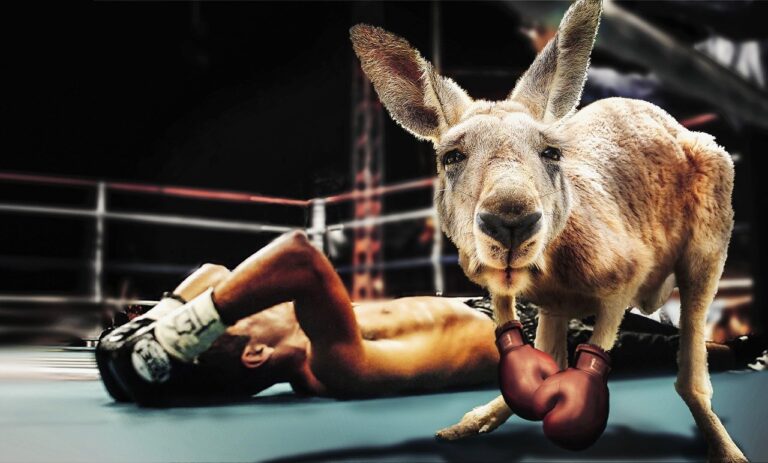Deepfakes and the Uncanny Valley
Introduction
Did you ever look at a video clip, or a sound bite, or a picture and it made you uneasy; but you couldn’t quite put your finger on it? Chances are that it made you uneasy because it wasn’t real. Rather, it was intended to make you believe it was real; to fool you. These images and sounds were created by technological advances including Artificial Intelligence (AI).
I am not talking about science fiction films and the special effects they create (although many of the special effects use the same technology). Everyone knows Light-Sabers, Imperial Walkers, and the Matrix are not real, and our brains can recognize that these images and sounds have been conjured for our entertainment. And they’re being no threat, we enjoy the theater.
Well, maybe the Matrix is real, but the movie itself is a fantasy.

What I am talking about is when these techniques are used to purposefully deceive you into thinking the persons or events are real. For instance, there are websites such as icons8 where you can get apps or use their systems to generate your own images that look like they are of real people in real places. And there is another website called generated.photos where you can get deepfake computer generated images for commercial use (or for whatever use).
And the advertising industry is using techniques to make food look much more appetizing, or people jump much higher than will ever happen in reality. They even make Tom Cruise look tall.
But it’s one thing to con you into thinking your burger is going to be much better than it will be. It’s quite another for you to be conned into thinking some computer-generated event is, in fact, real.
Take this project from a team at the University of Washington. It takes the actual words as spoken by President Barack Obama and synchs it to imaging generated by artificial intelligence (AI).
Or this advertisement from South Korea which is entirely created by AI.
Unlike in the video with Barack Obama which looks very convincing, something makes me uneasy in the video from South Korea. For one thing, my having some experience in photography, I am expecting everything in the same focal plane to be in similar focus.
In the commercial, what first caught my attention was how “crisp” the image of the person was as opposed to the surroundings in which it was placed. This is especially obvious in the zoomed-out scene with the subject in the foliage.
I also noticed some unusual imagery in the scene shot on the roof from below. The hands seemed to melt away instead of being blurred. You can actually see this in a frame-by frame play-back where the melting effect even blends into those things that are not moving.
The Uncanny Valley
This “uneasiness” is the subject of a hypothesis put first put forth by Masahiro Mori, a Japanese roboticist, in 1970 as “bukimi no tani genshō” (不気味の谷現象) and translated into English as “Uncanny Valley”.
The basis of the Uncanny Valley is the human reaction to things. We are not alarmed when we know something to be an obvious fiction or unreal representation. And we are similarly not alarmed when we know something to be real. But there is a point in between where a human becomes uneasy; that something is not right and we don’t know what it is, but someone or something is trying to con us.

An article in Simply Psychology entitled “Uncanny Valley” does a deeper dive into the hypothesis including several examples of the film industry attempts to graphically represent a story rather than live actors and the resultant observations and opinions (seems the closer to “real” the attempts were, the more the audiences were put off); and introduces additional postulates as to why this might be.
Thus far, there have not been any nefarious intent in what has been presented. The example with President Obama is an academic exercise. There are other examples are just some marketing folks trying to make a burger (or some other food) look better – or an insurance company more exciting – than they will ever be in real life. And of course, there is the film industry trying to present ever more fanciful stories and experiences (and perhaps produced more cheaply).
But what happens when deepfake audio and deepfake video are merged? According to an article in TechHQ entitled, “Deepfake videos double in less than a year”, the technology will soon exist when a video can be created placing anyone, anyplace, doing anything – or a made-up person, in a made-up place, doing a made-up thing (or any combination thereof).
It does not take much of an imagination to believe that bad actors with nefarious intent do exist. This same technology can be used to create entirely fictitious events. Even place someone at the scene of a crime who had nothing to do with the crime.
Beware the deepfakes.
I own the Operational Excellence LinkedIn Group (with ~100k members) where I approve all profiles who wish to join; which is approximately 500 or so per week.
To keep the Operational Excellence Group as relevant as possible to the members, and to ensure the content always drives value and does not turn into Facebook, I have set criterion for joining to filter-out those profiles that are fake or those who might be bad-actors. The criterion is not too challenging; i) you must be an individual and not an alias or company and, ii) you must have at least 20 connections.
But a few months ago, I started to see applicants who wanted to join the group that just made me feel uneasy; there was something about them that was not quite right. And I started to suspect that there was a concerted effort to become a member of the group by people who were not being genuine, or were acting as fronts for organizations whose intent was dishonest. I use the term dishonest because, if the intent were honest, it would not need to be masked.
Certainly, we all know that fake profiles exist on Facebook who take the form of so many trolls. But why would anyone want to create a fake profile on LinkedIn? So, I started to look into the matter and was rather surprised at what I found.
According to an article in TechHQ entitled, “Deepfakes are coming for your LinkedIn feed”, they analyzed a Deepfake LinkedIn Profile for “Katie Jones” whose “appearance was generated by AI and her account was fake, but that didn’t stop her connecting with high-level individuals” and where, “Based on her LinkedIn account, Katie Jones earned a degree in Russian studies from the University of Michigan, a fellow of Strategic and International Studies in Washington, and works at a top think tank, except there were no records of her in any of the cases.”
The Associated Press ran an article on the same subject (including Katie Jones) entitled, “Experts: Spy used AI-generated face to connect with targets” which did a deeper dive into what the tell-tails of a fake profile and deepfake profile image could be and what to look for when determining if the profile you are looking at is from someone who is real or fake.
Pro-Tip: It might be worth noting that you should make sure your profile picture and profile content do not resemble that of a deepfake. Do the work; use a “real” picture of yourself and flesh-out your profile.
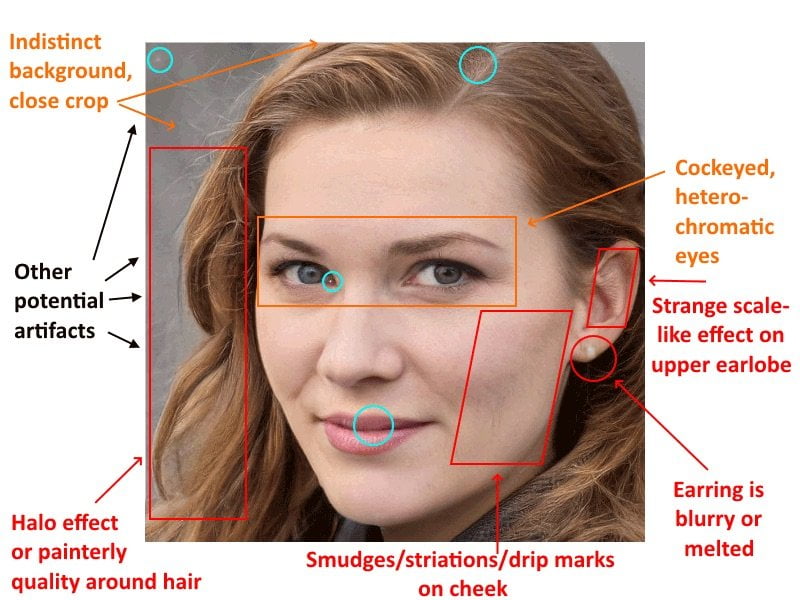
In addition, the image of “Katie” used in her profile were generated by Generative Adversarial Networks (GANs) and are not discoverable by reverse Google image search. For more examples of deepfake images you can go to “thispersondoesnotexist.com” where you can refresh the page to see subsequent examples. Details for the image are in the lower right corner of the page.
Are you sure you can tell pictures of real people from deepfakes? Then take the “Which Face is Real Challenge” and see how you do. I was consistently able to tell the difference (probably 95%), but it’s still friggin scary…
Deepfakes discovered on LinkedIn
Convinced that I was being challenged by deepfakes trying to infiltrate my Operational Excellence group on LinkedIn and armed with additional knowledge of the tell-tails, I started to take a closer examination of suspected profiles as I blocked them from becoming members of the group.
And taking note of the specific characteristics of the profiles I was banning; I was able to determine there were four distinct groups of profiles that were suspect.
Disclaimer: I want to make it clear; although I suspect these profiles and organizations to be fake or bad actors, I don’t know that for certain as fact. Therefore, everything about any individual or organization is merely my opinion. Accordingly, the views and opinions expressed herein are those of the author and do not necessarily reflect the opinions of the Operational Excellence Society or any other company or organization which might share this article. If anyone or any organization can prove those identified below are real, then the article will be noted as such and updated accordingly.
Group-1:
This is the first group of profiles to catch my attention on LinkedIn and which put me on alert for others. All the profiles in this group belong to a company call “FasterCapital”, which is a company that supposedly funds start-ups and companies in need of capital. Of all the groups using possible (probable) fake profiles on LinkedIn, I believe this is the most sophisticated I have encountered.
The most significant tell-tail for this group is the behavior of the profiles after I approved them for membership. Almost immediately after they were approved into the group, they started spamming the group’s discussion board offering to match-up investors with start-ups. As this activity in not allowed in the group (as stated in the group rules), I started deleting the posts, then I gave a warning message, then I started blocking the members. Since this seemed to be the behavior pattern of all profiles from FasterCompany, I started blocking them on their applying for membership; saves me effort.
Is this a legitimate company? Are these legitimate profiles? I don’t care. The profiles were chronic violators of the group rules, spammed the group, and had to go. You can judge for yourself by following the links to some of the profiles I blocked; I believe they are fake. But I warn you against following further links that will take you outside LinkedIn.
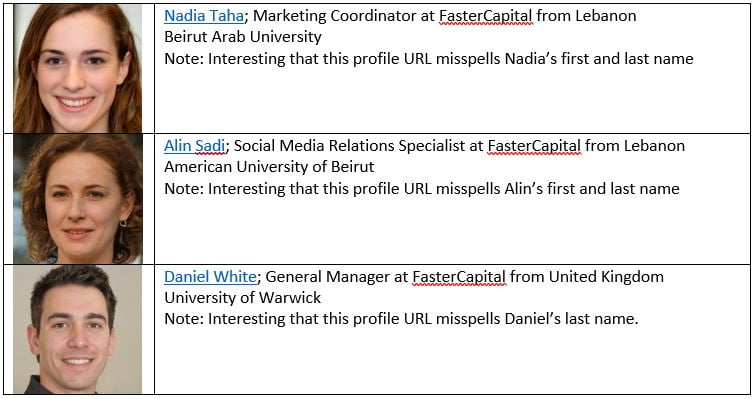
- https://www.linkedin.com/in/naddiatahaa11/
- https://www.linkedin.com/in/alinnsaadi/
- https://www.linkedin.com/in/danielwhit/
Group-2
The tell-tail for the second group was they all had the name “O.P.T.I.M.A.T.E” in their Profile “headline” followed by a rocket-ship emoticon. The profiles have since been updated to make the company name simply “Optimate” and they have removed the rocket-ship emoticon. But the profiles still have these tell-tales;
- Only their position at Optimate is fully developed with that position being “Recruitment Specialist”
- There is no detail of what they accomplished or did at their previous positions.
- Their previous positions (of which there are exactly three) were at major companies and begs the question, why did they move to an obscure company?
- Their degrees were all from prestigious universities.
- They knew at least two languages.
- They had very few (or no) endorsements or recommendations. Those that they did have were from just a couple of individuals; almost all of which were from a different part of the world.
Now, each of these tell-tails would not raise my suspicion by themselves. But they did not pass the sniff-test when combined; in fact, they stunk.
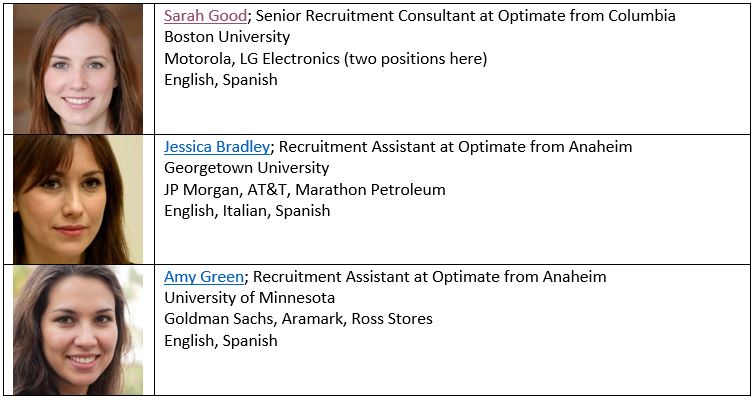
- https://www.linkedin.com/in/sarahgood550a801b3/
- https://www.linkedin.com/in/jessica-bradley-743348215/
- https://www.linkedin.com/in/amy-green-778ba1218/
Group-3
This is the most interesting group of profiles I believe are fake. They don’t appear to belong to any particular organization. But their profiles very much follow the pattern described in the articles in AP and TechHQ referenced above.
This group has several tell-tails including;
- no banner picture,
- they always have exactly three positions (each with major companies) but no job description or accomplishments.
- They had very few (or no) endorsements or recommendations. Those that did were from just a couple of individuals; with many being suspected deepfake profiles themselves.
- they each went to prestigious universities, and they all know two languages.
- Their activities consist of mostly sharing content without commentary.
But the biggest tell-tail for this group is their headline which almost always has rather far-fetched and fantastic titles such as; Aspiring Best-Selling Author, Business Mentor, Business Coach, Humanitarian Relief Expert, Crisis Relief Thinker, Social Entrepreneur, International Consultant, AI Enthusiast, Award-Winning Business Strategist, Angel Investor, Start-up Investor, International Speaker, Networking Guru, Branding Advisor, Growth Expert, Life Coach, Award-Winning HR Consultant, International Crisis Relief Consultant, Digital Nomad, and so on…
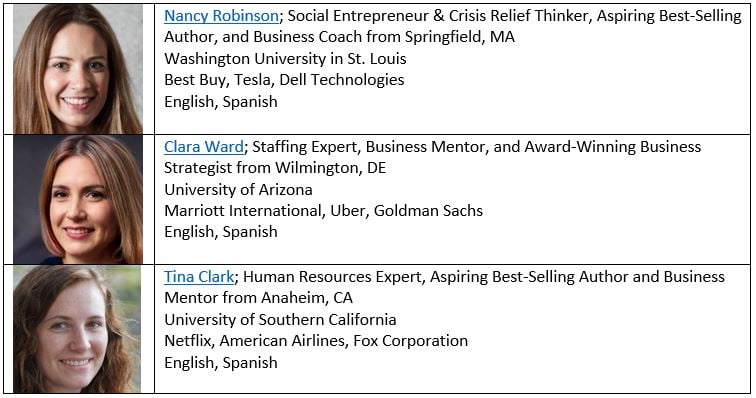
- https://www.linkedin.com/in/nancy-robinson-322665225/
- https://www.linkedin.com/in/clara-ward-232675220/
- https://www.linkedin.com/in/tina-clark-36a184219/
Group-4
This group is the easiest group to spot because they are obvious. They are the ones that just don’t pass the sniff test and everyone should be able to recognize them with little effort. Oftentimes, these profile pictures will not be deepfakes, just “borrowed” from someone else. They might even use the real person’s name and other information; a practice called “spoofing”.
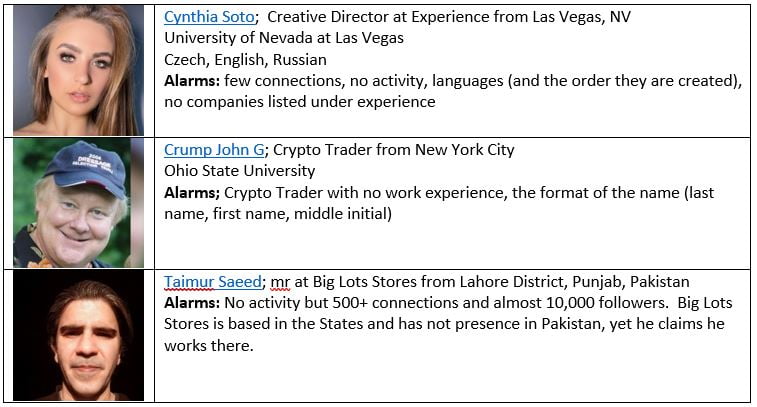
- https://www.linkedin.com/in/cynthia-soto-58329221b/
- https://www.linkedin.com/in/crump-john-g-247927229/
- https://www.linkedin.com/in/taimur-saeed-106354146/
Listen to your inner-voice
Looking at the profiles I blocked from the Operational Excellence group together, a person can tell the pictures are all different, but at the same time they all look the same. Just look at the small sample of pictures above (especially those in Groups 1-3 above).
What is their motivation?
The motivation of those in Group-1 were easy to determine because their actions betrayed their intent; they wanted to seek people with companies in need of investment. So, of the groups, they were the most honest of the dishonest (less than honest?).
It was difficult to gauge the motivations for Group-2 and Group-3. The only activity associated with the profiles was the sharing of content (articles). That the content was from outside LinkedIn caused me concern and I never followed the URL’s for fear of being exposed to some virus. But in any case, that they made me uneasy meant that they were banned.
We all want to have a positive and professional experience on LinkedIn. And we enjoy it when people want to be connected with us – being recognized helps to feed our egos. But it is in all of our best interests to make sure the people who are connecting with us are genuine and their motives pure (at least not nefarious).
After all, once they are connected with you, they will show as connected with you to others. This means they are borrowing from your reputation to bolster their own. Would you want to show others that you are connected to anyone above? I didn’t think so.
If a profile makes you feel uneasy, you have probably entered the uncanny valley and you should listen to your inner voice.
References;
- Wikipedia; Uncanny Valley and Masahiro Mori
- Simply Psychology; Uncanny Valley
- Associated Press: Experts: Spy used AI-Generated face to connect with targets
- TechHQ: Deepfake videos double in less than a year
- TechHQ: Deepfakes are coming to your LinkedIn feed
About the author
Joseph Paris is an international expert in the field of Operational Excellence, organizational design, strategy development and deployment, and helping companies become high-performance organizations. His vehicles for change include being the Founder of; the XONITEK Group of Companies; the Operational Excellence Society; and the Readiness Institute.
He is a sought-after speaker and lecturer and his book, “State of Readiness” has been endorsed by senior leaders at some of the most respected companies in the world.
Click here to learn more about Joseph Paris or connect with him on LinkedIn.

